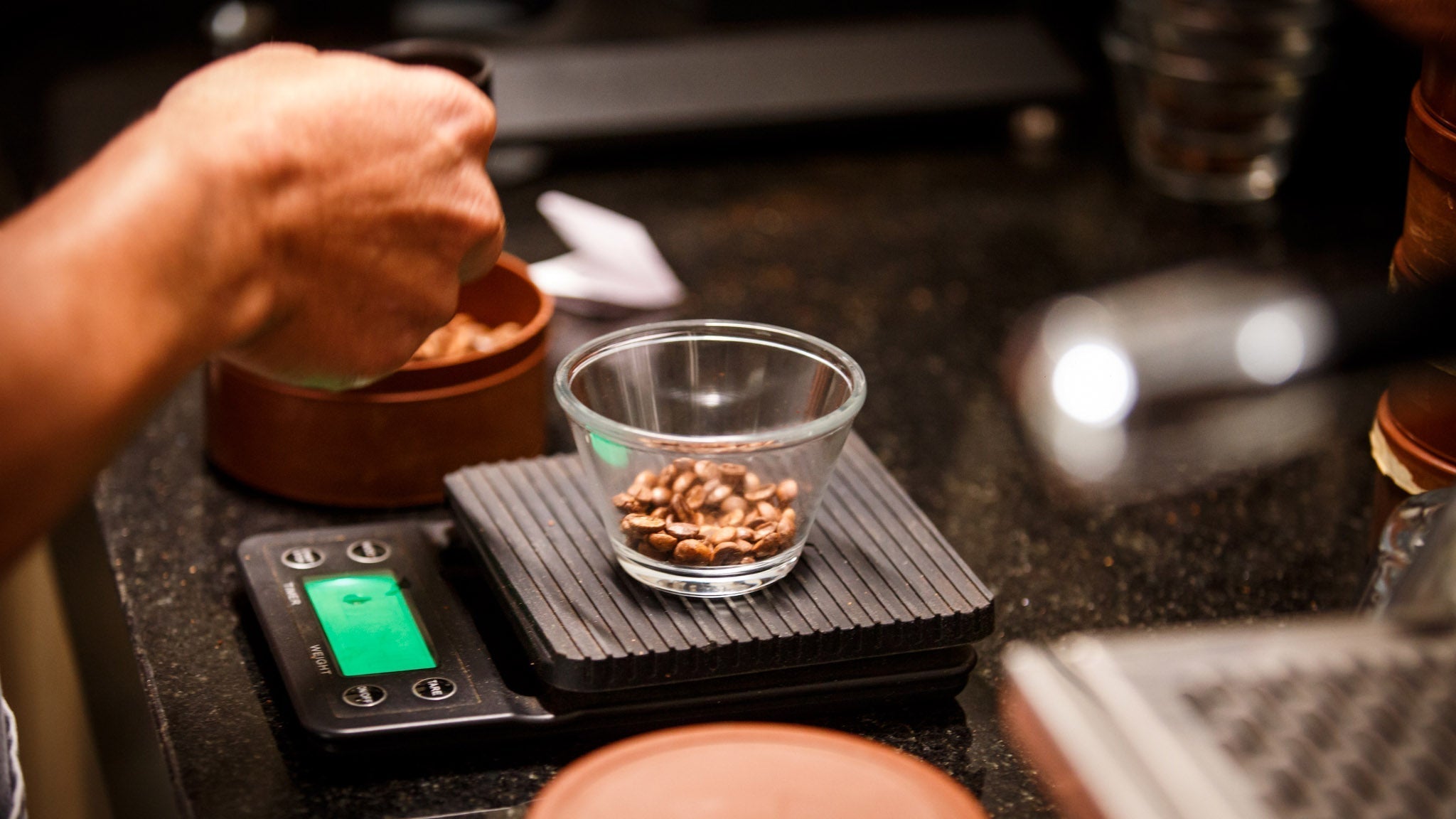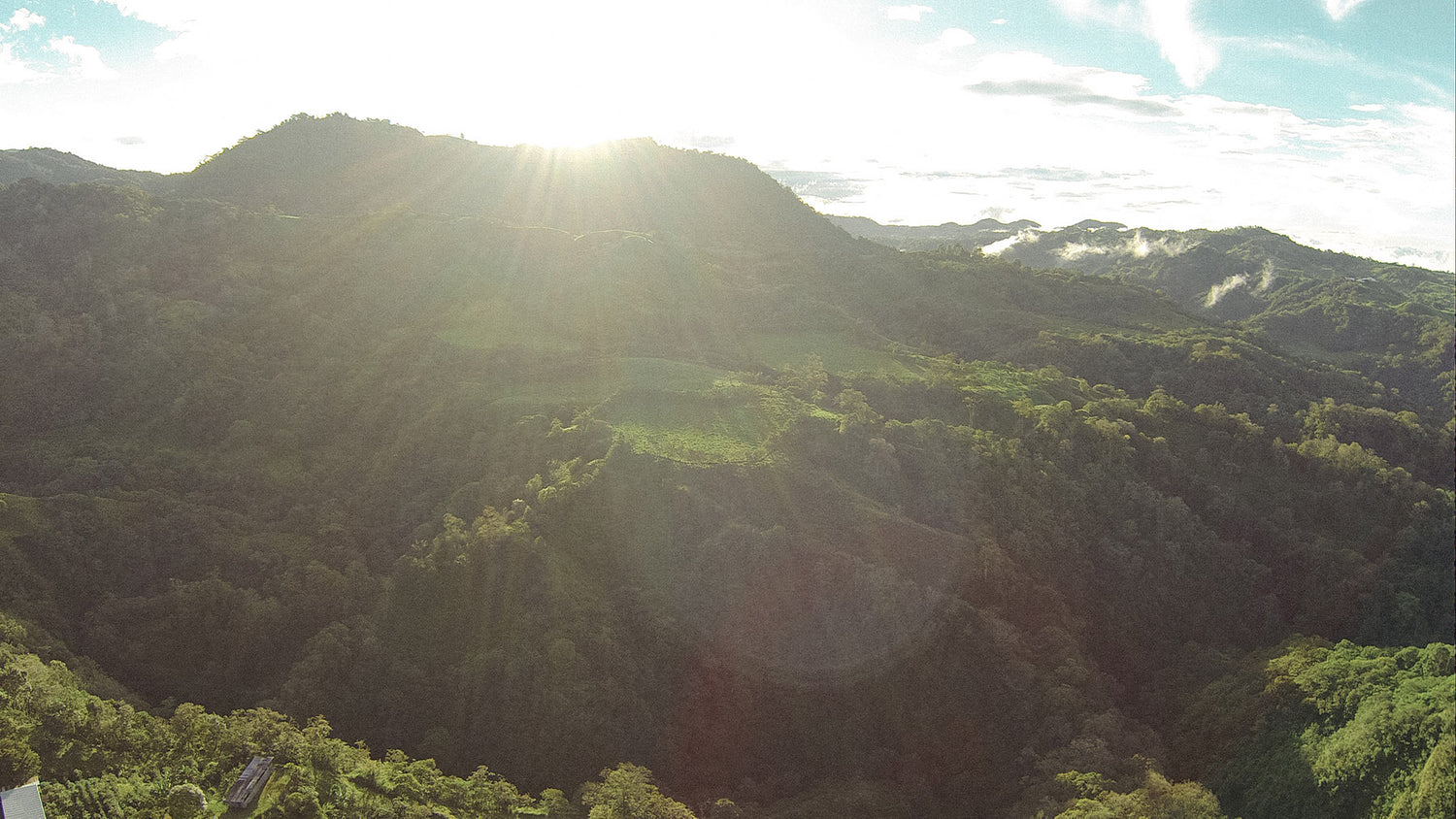One tablespoon of coffee per cup. That's how our grandmother made coffee. Let's be honest: even today, a lot of people still do it that way. It can work well, but it can also go wrong. It's a bit like saying: 1 glass of wine for the roast/stew etc. White or red wine? How big is the glass?
So how do I find the right amount of filter coffee? We'll look at things like brew ratio, dosage and also the spoon-per-cup method to make the perfect filter coffee.
Amount of filter coffee – why is the right amount of coffee important?
I don't necessarily want to use Paracelsus' saying , but it can't do any harm: "All things are poison and nothing without poison. Only the dose makes a thing not poison." And now let's relate this to filter coffee: caffeine can indeed be harmful if the dose is too high. So let's assume - these examples are intentionally extreme - that you use 125 ml of water and 125 grams of coffee. That would be neither liquid nor tasty and the whole thing might have too much caffeine. Conversely, if you use only 1.25 grams of coffee for 125 milliliters of water, it will be a very pale broth that doesn't taste good. Now you could say: "These are also extreme examples. The differences are of course stark." Yes, that's true, and it was just to illustrate that the amount of coffee and the amount of water have to be coordinated.

filter coffee quantity – brew ratio
For this, the so-called brew ratio, i.e. the coffee-to-water ratio, is often used. As already mentioned at the beginning, the ratio is often 1 tablespoon to a cup. But how heaped is the spoon and how big is the cup you are measuring with? It's all pretty imprecise. Anything from very strong to very watery coffee is possible. That's why there are guide values for coffee, too, and for ease of use these are given in grams per milliliter. A good brew ratio for filter coffee, for example, is 1:15 to 1:18. So 1 part coffee to 15 to 18 parts water. That would mean between 55 and 66 grams of coffee per liter of water. And converted to a cup (125 ml), that's about 7 to 8 grams.
Side note: A (level) tablespoon can contain 8 grams, but if it is heaped it can also weigh up to 12 grams.
Filter coffee quantity – what’s the problem?
The problem is that not all of the flavors found in coffee taste good. So if you let coffee brew for too long, these substances will be extracted. And then the coffee doesn't taste very good. The longer it brews, the more bitter the coffee becomes. On the other hand, under-extraction is when the coffee brews for too short a time, and then the coffee becomes sour.
The same applies to the wrong amounts: if there is too much coffee in the water, too much is extracted; if there is too little coffee in the water, too little is extracted. In both cases, you get coffee that doesn't taste good.
Amount of filter coffee – how do I find the right amount of filter coffee?
There are many tables and opinions on the Internet for this. However, the tablespoon is usually not considered correct, as it is too imprecise. You will usually also find a from-to indication, as coffee varies greatly: be it between the different roasting levels or the varieties or even the different harvests of one and the same coffee plant. Your personal taste also plays the most important role. This can of course be perfectly served with a tablespoon per cup.
Filter coffee quantity – table with guidelines
Attached is a small guideline table for the different preparation methods and a recommended brew ratio.
| portafilter espresso | 1:2 - 1:3 |
| portafilter Ristretto |
1:1 - 1:1.5 |
| portafilter Lungo | 1:3 - 1:4 |
| filter coffee | 1:15 - 1:18 |
| Aeropress, Chemex | 1:15 - 1:18 |
| French Press | 1:16 - 1:18 |
| stovetop kettle | Sieve loosely filled and water up to the valve |
| fully automatic machine | Possibly adjustable in the menu, take ratios of espresso and coffee |
| Cold Brew | 1:6 - 1:10 |
Based on these guidelines, you can't go wrong initially. Choose your method and then a value (upper end, lower end or even in the middle) and make a coffee. And then - if it still doesn't taste good enough for you - change the brew ratio.
filter coffee quantity – the spoon method

So we have definitely ruled out using a spoon as a measuring quantity, because it is impossible to always fill a spoon the same amount. A few grams per spoon can easily happen and that adds up. If you make 8 cups of coffee and have 2 grams too much per spoon, you end up with 16 grams too much coffee, which has a significant impact on the taste. So if you only measure with a spoon, you are bound to use the wrong dosage. Apart from that, the amount of water also varies depending on the size of the cup you are brewing for.
Filter coffee quantity - spoon guidelines
Nevertheless, we would like to give you some instructions on how to use a spoon. We are assuming a normal, heaped tablespoon. Each spoon should contain around 10 to 11 grams of coffee powder. The best thing would of course be to weigh a spoonful of coffee, then you will really know how much is in it.
- Filter methods (hand filter, Chemex, French Press etc.) - 1 to 1.5 spoons per 200 ml cup
- Portafilter - 1.5 to 2 spoons per double espresso
- Cold Brew - 10 to 16.5 spoons per liter
It is much easier with a stovetop pot/espresso maker because you always fill the sieve to the brim without having to stuff it or press it.
Filter coffee quantity – why the exact gram indication is important
Why is a gram indication of the amount of filter coffee more important and more accurate than a spoon indication? It's quite simple: every type of coffee has a different structure. That means they have a different density. So it's possible that you get 10 grams of type A with a spoon, but only 7 grams of type B. Such a drastic change in the amount can also massively change the taste of your coffee. The deviation from the optimal recipe is simply too great and bitter or sour flavors arise. You can also adjust the dosage suggestions to find the optimal taste for you, and then your recipe can be specified to the exact gram. That's why we recommend a digital coffee scale. With this you can create your own individual recipe and also precisely control the brew ratio, i.e. the water-coffee ratio.
filter coffee quantity - grind level
In addition to the correct dosage, how you grind your coffee is also very important. This affects the taste just as much as the right amount. Because if you take the right amount of filter coffee and grind it as finely as an espresso, your filter coffee will taste pretty disgusting.
Rule of thumb: The longer (time) the coffee powder has contact with water, the coarser you should grind it.
French press is coarser than filter coffee is coarser than espresso. The difference is even clearer between French press and espresso. For the French press, you can expect a brewing time of around four minutes, and for an espresso, preparation takes around 30 seconds. That's why espresso powder has to be much finer than for the French press. This way, the water can still extract enough aromas from the powder in less time.
filter coffee quantity – conclusion
It's fine for us whether you use a precision scale and gram count when preparing your coffee or a pi-times-tablespoon. We want you to be happy. We naturally recommend using grams for recipes, as this will optimize the taste of your coffee and make it more consistently reproducible. The important thing is that you and your guests enjoy the coffee, that you buy good coffee from a reliable source and that you enjoy it. Coffee often sounds like science to professionals like us, but it's a passion. Even if you use a tablespoon, you can still make quite tasty coffee - of course it's better with a recipe that's accurate to the gram milliliter.


